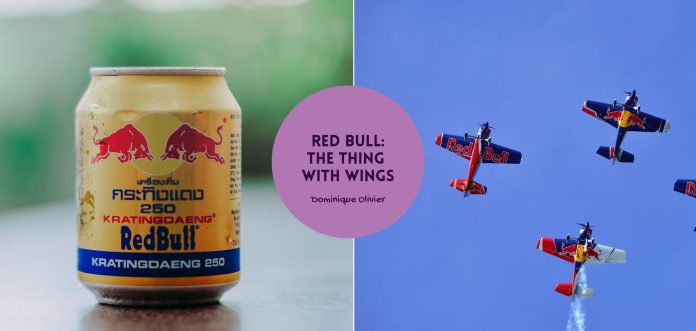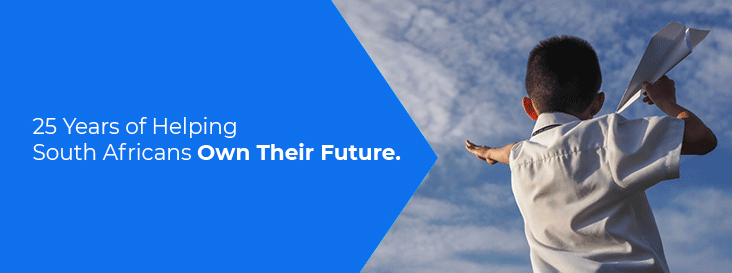With over two-thirds of the energy drink market in a vice grip, Red Bull isn’t just a beverage – it’s the undisputed overlord of its category. But what does any of this have to do with death-defying stunts, football teams and the youngest Formula 1 driver in history? Welcome to perhaps the best example of lifestyle marketing in the world.
As of 2024, Red Bull was estimated to have a 37% share of the energy drink market, making it the most popular energy drink on the planet and the third most valuable soft drink brand behind Coca-Cola and Pepsi. Not bad for something that tastes like fizzy cough syrup and ambition!
Since crash-landing into the world in 1987, Red Bull has sold over 100 billion cans globally. 12.7 billion of those were sold in 2024 alone. That’s a lot of people hoping to sprout some wings.
The original formula came in exactly one flavour, but these days, there’s a rainbow of spin-offs and even a sugar-free option. But the core product remains a sort of carbonated rite of passage for students, startup founders, and anyone whose sleep schedule is a suggestion, not a rule.
The now-iconic slogan, “Red Bull gives you wings”, has been imprinted on the cultural psyche with the same permanence as “Just Do It” or “I’m Lovin’ It.” But Red Bull didn’t climb to the top by playing it safe. Instead, it built a high-octane mythology around itself, sponsoring death-defying stunts, adrenaline-fuelled sports, and events that blur the line between brand and belief system.
Forget jingles and TV spots – this is how Red Bull built an empire by selling a lifestyle disguised as an energy drink.
From jet lag to jet fuel
Before Red Bull was fuelling snowboarders, DJs, and sleep-deprived students in the West, it was keeping truck drivers and factory workers upright in the sweltering heat of Thailand. Its origin story takes us to the backstreets of Bangkok, where a duck-farmer-turned-pharmaceutical-entrepreneur named Chaleo Yoovidhya was tinkering with a solution for exhaustion.
Chaleo, the son of Chinese immigrants, founded T.C. Pharmaceutical Industries in the 1970s, selling over-the-counter syrups and medicines to Thailand’s working class. Inspired by Japan’s growing market of functional tonics, he created Krating Daeng in 1976 – a thick, non-carbonated, caffeine-and-taurine cocktail served in squat little glass bottles. It didn’t fizz, it didn’t come in a designer can, and no one called it a “lifestyle choice.” It was made for people who worked long, hard hours and needed to stay awake to finish them.
And that might’ve been the whole story if an Austrian toothpaste marketer hadn’t been battling jet lag in the early 1980s.
Enter Dietrich Mateschitz. On a business trip to Asia, running on fumes and frustration, he was handed a bottle of Krating Daeng by a local colleague. One sip and his circadian rhythm snapped back like a rubber band. More importantly, he saw something others didn’t: a business opportunity with wings.
By 1984, Mateschitz and Chaleo had struck a deal. They co-founded Red Bull GmbH, each owning 49%, with 2% set aside for Chaleo’s son, Chalerm. Chaleo brought the formula. Mateschitz brought the vision, and the rest, as they say, is history.
But bringing Krating Daeng to the West wasn’t a copy-paste job. Western palates weren’t ready for the syrupy, medicinal original. So Mateschitz carbonated it, tweaked the sweetness, and ditched the humble glass bottle for a slim, futuristic can that looked more at home in a nightclub than a 7-Eleven. From the packaging to the flavour, it was a complete identity overhaul – but the masterstroke would be the positioning. In Thailand, Krating Daeng was a blue-collar tool. In Europe, Red Bull would be an elite accessory. A drink not for the tired, but for the tireless.
An empire of experiences
Instead of sticking to traditional ads or celebrity endorsements, Red Bull built its identity around experiences – specifically, the kinds of experiences that involve risk, speed, or gravity-defying stunts.
Its strategy is rooted in experiential marketing. The idea is that people remember what they feel, not just what they see. By sponsoring extreme sports events and athletes, Red Bull has created a strong association with adrenaline, ambition, and adventure. To keep that storytelling in its own hands, Red Bull created Red Bull Media House, an in-house content studio responsible for everything from YouTube videos and Instagram reels to documentaries and podcasts. By keeping production close to the brand, it ensures consistency in tone and message, something that’s helped Red Bull stay culturally relevant across platforms.
One of the clearest examples of this strategy in action is the Felix Baumgartner stratosphere jump, a moment that blurred the lines between science, sport, and spectacle. On October 14, 2012, Austrian skydiver Felix Baumgartner ascended to an altitude of approximately 39 kilometers above Earth, lifted by a helium balloon from Roswell, New Mexico. From this height, he executed a free fall that lasted about 4 minutes and 20 seconds, during which he reached a top speed of 1,358 km/h, becoming the first person to break the sound barrier without vehicular power.
The mission, known as Red Bull Stratos, aimed to transcend human limits and gather valuable data for aerospace medicine and engineering. The project involved a team of experts in various fields, including aerospace medicine, engineering, and pressure suit development. The event was broadcast live and captivated millions worldwide, setting a record for the most concurrent views on a live stream at the time.
The brand’s investment in sport extends well beyond sponsorship. Red Bull owns several major teams, including Red Bull Racing in Formula 1, and football clubs like RB Leipzig, Red Bull Salzburg, and the New York Red Bulls. Beyond traditional sports, Red Bull has backed niche pursuits like the Cliff Diving World Series, and has even entered the music industry through Red Bull Records, an independent label launched in 2007 to support emerging talent. A year later, the brand added a publishing arm to represent songwriters and producers.
Market like you mean it
It might seem unconventional for an energy drink company to own Formula 1 teams, football clubs, music labels, and a global media house. But for Red Bull, these are more than side hustles. They’re the scaffolding of its entire brand strategy.
Red Bull allocates an estimated 25–30% of its annual revenue – that was around $2 billion in 2023 – to marketing. But instead of traditional ad campaigns, it channels this investment into building a self-reinforcing ecosystem. Red Bull doesn’t just place its logo on sports teams; it owns them. It doesn’t just sponsor content; it produces it. This ownership model gives the brand full control over the fan experience, on the track, on screen, and online, allowing it to orchestrate every touchpoint with precision.
This integrated approach creates a powerful synergy. Fans of Red Bull Racing, for example, are more likely to tune into Red Bull TV documentaries, share extreme sports clips on social media, or attend a cliff-diving event, all of which amplify brand engagement. Each part of the ecosystem promotes the others, unlocking economies of scale and deepening consumer loyalty. By aligning every element of its brand universe, Red Bull has built a marketing machine where the lines between content, commerce, and culture blur.
As the company looks to the future, Red Bull is well-positioned to expand its existing presence in emerging areas like esports, where its high-octane identity aligns naturally with digital-native audiences. At the same time, its growing media output allows it to diversify revenue streams and capitalise on the demand for premium branded content. The challenge will be balancing its aggressive spending with sustained returns, especially in markets with tight sponsorship regulations.
Still, Red Bull’s playbook shows what’s possible when a brand doesn’t just sell the experience, but becomes the experience.
Finally, here’s a fun fact for us South Africans: Red Bull’s biggest competitor, Monster, was launched by South African-born Rodney Sacks and Hilton Schlosberg in 2002 after they acquired Hansen Natural Corporation in the US in the early 90s. And as a great example of how you really don’t know where the pursuit of opportunity will take you, Sacks studied law and was a partner at Werksmans before he left for the US and made the acquisition.
Clearly, we should all be travelling more.
About the author: Dominique Olivier

Dominique Olivier is the founder of human.writer, where she uses her love of storytelling and ideation to help brands solve problems.
She is a weekly columnist in Ghost Mail and collaborates with The Finance Ghost on Ghost Mail Weekender, a Sunday publication designed to help you be more interesting. She now also writes a regular column for Daily Maverick.
Dominique can be reached on LinkedIn here.




